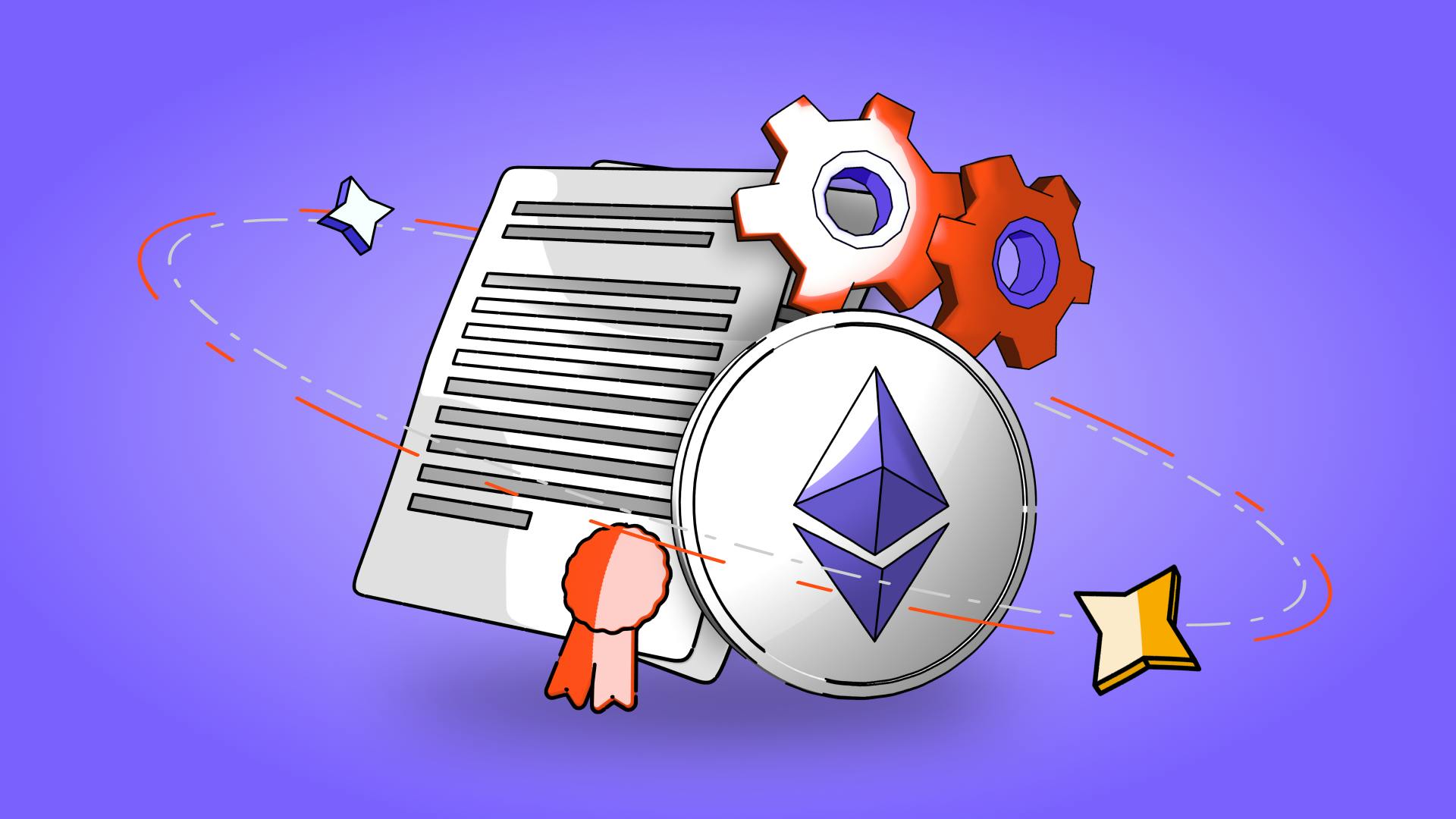The Anatomy of a Smart Contract: Breaking Down the Code
December 5, 2025

by Coinmetro Editorial Team
December 5, 2025
Nick Szabo, a computer scientist and cryptographer, introduced smart contracts in 1994. Szabo created digital agreements that enforce terms with code when certain conditions trigger. This design supports decentralized systems on blockchain networks.
Platforms like Ethereum, Solana, and Polkadot now run smart contracts. They enable decentralized apps, financial tools, and asset management solutions. These features improve blockchain efficiency and usability.
Understanding smart contracts helps developers produce secure, reliable code. It ensures strong applications and safe interactions with blockchain systems, an environment where mistakes can be costly.
In this blog, you will learn about:
- What is a smart contract?
- Key components of a smart contract
- Coding languages used for smart contracts
- How smart contracts interact with the blockchain
- Common vulnerabilities
- Real-world applications
Smart contracts are digital agreements that execute terms through code automatically. When conditions trigger, they transfer funds or issue tokens without intermediaries.
Smart contracts can automate key processes in blockchain applications. In decentralized finance, they handle lending, borrowing, and trading tasks. For NFTs, they control ownership changes, enhancing transparency and efficiency.
Smart contracts extend beyond finance into healthcare, transportation, IoT sectors, and more. In healthcare, they share patient data securely. In transportation and IoT, they manage payments and device behavior.
Functions: In a smart contract, functions perform tasks such as transferring tokens or updating data. When called, they trigger actions and can also call other functions, allowing for more complex operations.
State Variables: These variables store data on the blockchain, like token balances, user addresses, or contract settings. Since they are stored on-chain, they retain their values across different contract executions.
Modifiers: Act as conditional checks for functions. They ensure that certain conditions are met before executing a function. For instance, a modifier might restrict a function to specific users, such as the contract owner.
Events: Serve as log entries, recording key activities on the blockchain. They allow smart contracts to communicate with external applications and provide a way to monitor contract interactions, like when tokens are transferred, or a new user joins.
Discover Smart Contract Vulnerabilities: Case Studies of Major Exploits

Various programming languages support smart contract development, each tailored to the unique needs of different blockchain networks and their applications:
Solidity: Solidity tops the list for Ethereum smart contract coding. It runs on the Ethereum Virtual Machine for decentralized apps. Its style matches JavaScript, helping web coders adapt fast.
Vyper: Vyper simplifies smart contracts with a focus on safety. It drops risky features for secure, clear outcomes. Its Python-like look suits coders who value clean code.
Other blockchain-specific languages: Different blockchain networks use specialized languages. Rust speeds up Solana with strong security. Michelson is used for accuracy on the Tezos blockchain contracts.
Gas Fees: Users pay gas fees to run smart contract functions. Gas tracks the computing power needed for blockchain transactions. These fees reward miners and block network spam.
Data Storage: Storing data in smart contracts comes with costs. Blockchain keeps data secure and permanent, using resources. Bigger data like arrays raises gas fees for developers.
Interacting with other Contracts: Smart contracts connect by calling other contract functions. This process uses gas to handle computing and data transfers. It builds complex systems like DeFi for lending and trading.
Smart contracts, while powerful, are not immune to security risks. Understanding common vulnerabilities can help developers safeguard their code and protect users from potential exploits:
Reentrancy Attacks: Reentrancy attacks hit when a contract lets another call back too soon. An attacker might drain funds before the balance updates. Developers fix this by updating variables first.
Integer Overflow/Underflow: Integer issues arise when math pushes past a variable’s limits. Adding too much could drop the value to zero. Safe math libraries catch these errors automatically.
Access Control Flaws: Poor permission setups can let unauthorized users run key contract functions. Without strict checks, anyone might access admin tasks. Developers add clear roles to block this.
Smart contracts reshape industries by automating tasks and enforcing agreements digitally. They boost finance, healthcare, and supply chains with secure, fast operations. Here’s how they’re making a difference across different sectors.
Decentralized Finance (DeFi): Smart contracts power DeFi apps like lending, borrowing, and trading. Users lock assets to earn interest or secure loans quickly. This cuts costs over traditional finance.
NFTs: Smart contracts handle the minting and transferring of Non-Fungible Tokens. Each NFT links to a contract tracking ownership details. Trading NFTs updates blockchain records automatically.
Supply Chain Management: Smart contracts track goods in logistics from start to end. Shipping and quality checks update the status on the blockchain. This increases transparency and lowers fraud risks.
Healthcare: Smart contracts manage patient data and insurance claims efficiently and securely. They verify records and guard privacy with ease. Payouts trigger when medical steps are complete.
Real Estate: Smart contracts streamline property sales and rentals digitally. They process payments and shift ownership without middlemen. This saves time and reduces costs.
Internet of Things (IoT): Smart contracts connect IoT devices for automated tasks. A smart car pays tolls or parking fees directly. This runs smoothly without human effort.
Understanding the anatomy of smart contracts is essential for anyone looking to interact with blockchain technology. By knowing how smart contracts work, users can make informed decisions, spot potential risks, and avoid costly mistakes. Whether investing in DeFi, buying NFTs, or exploring other blockchain applications, having a basic grasp of smart contracts helps ensure safe and secure transactions.
However, most of the magic of smart contracts happens behind the scenes. Users generally benefit from the features and advantages without a deep technical understanding of how these contracts operate. This seamless experience is the magic of technology, where complex processes work quietly in the background, delivering powerful results while allowing users to enjoy the benefits directly.
▶️ Watch: Smart Contracts for Beginners
Join the Coinmetro community on Discord and Telegram, where forward-thinking traders and investors gather to share insights, explore new opportunities, and dive deep into cryptocurrencies. Should you need any help, please contact our world-class Customer Support Team via 24/7 live chat or email at hello@coinmetro.com.
To become a Coinmetro user today, Sign Up now or head to our new Exchange if you are already registered to experience our premium trading platform.
Tags
Related Articles

Regulatory Sandboxes: Fostering Crypto Innovation Within Legal Frameworks
The cryptocurrency industry’s fast rise fuels an important debate. Innovation aims to transform finance, enhancing speed and access. Yet, regulators…
5m

Crypto Options Trading: Strategies and Market Insights
Cryptocurrency markets have rapidly expanded beyond simple buying and selling. One of the most significant developments has been the rise of…
6m

The Rise of Social-Fi: Blending Social Media with Decentralized Finance
In recent years, social media and finance have started to merge, creating Social-Fi. This concept blends the engagement of social platforms with…
6m

DeFi Insurance Platforms to Watch in 2024
Decentralized Finance (DeFi) insurance addresses the growing need for insurance against hacks, smart contract failures, and other DeFi-related risks.…
7m